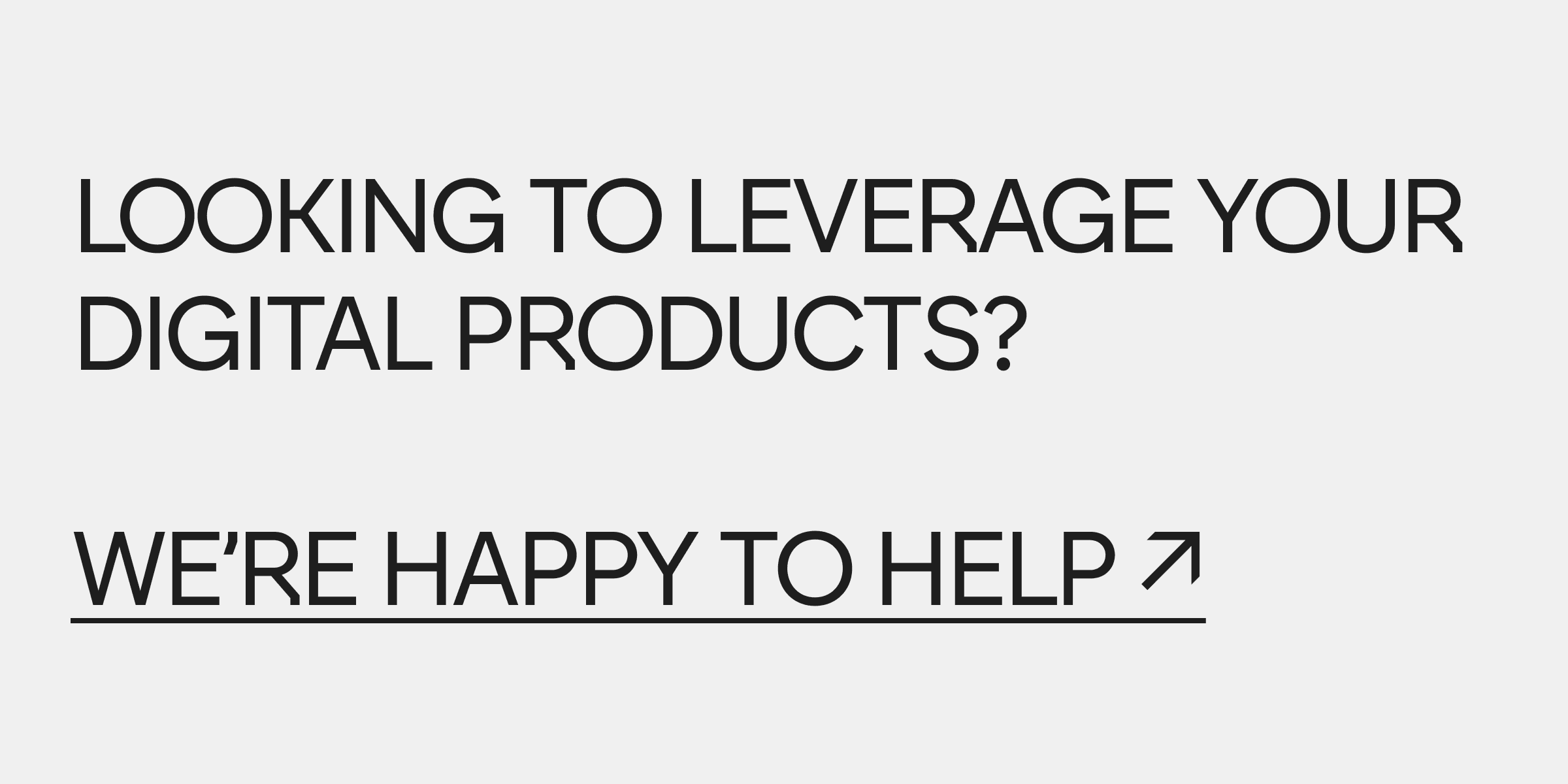The internet has become an essential part of our daily lives. From shopping and socializing to accessing information and different services, the digital landscape has permeated almost every aspect of our existence. However, amidst such a vast online realm, it is crucial to acknowledge and address the diverse needs and abilities of individuals who navigate the web. That’s where the concept of neurodiversity comes into play.
Neurodiversity recognizes and celebrates the natural variations in human neurological functioning, emphasizing that neurodivergent individuals possess unique strengths, abilities, and perspectives. ASD, ADHD, dyslexia, and other cognitive differences are some of the most commonly known examples of neurodivergent conditions. With an estimated one in five people worldwide identified as neuroatypical, it is imperative to create web designs that cater to the needs of neurodiverse individuals, ensuring an inclusive and accessible digital experience for every single internet user. Just as the built environment can be designed to accommodate diverse sensory experiences, web design must also consider the unique needs of neurodivergent individuals.
What Is Neurodiversity?
Neurodiversity is a concept and social movement that advocates for understanding and accepting neurological differences as natural variations in the human genome, rather than as defects or disorders. Instead of focusing on curing or fixing individuals with these conditions, the neurodiversity approach promotes support systems and accommodations that allow neurodivergent people to live fulfilling lives according to their own needs and potential. Understanding how different neurological conditions affect the nervous system can help in designing more supportive environments. It challenges traditional views of normalcy in brain function and behavior, encouraging society to embrace differences in learning, attention, mood, and other neurological functions as part of the diversity of human experience.

Different Types of Neurodiversity and Their Impact on One’s Browsing Experience
The concept of neurodiversity acknowledges the vast range of neurological variations that exist within the human population, including but not limited to autism spectrum disorder, attention deficit hyperactivity disorder, and dyslexia. Such conditions influences how individuals perceive, understand, and navigate the internet, making it imperative to consider their impact on one's browsing experience.
Read also: European Accessibility Act (EAA) in Web Design: Requirements & Guides
Autism Spectrum Disorder (ASD)
For individuals with autism spectrum disorder, the browsing experience can be significantly influenced by heightened sensitivity to sensory stimulation and difficulties in understanding implicit content. Websites with minimalistic design, predictable navigation, and clear, concise text can be more accessible and less overwhelming. Conversely, overly cluttered pages, unpredictable animated elements, or audio that plays automatically may cause distress or sensory overload. Additionally, abstract language, idioms, or figurative speech found in content can be confusing, making straightforward and literal communication essential.
Incorporating natural materials in web design, such as using calming color schemes and textures, can help reduce sensory overload for individuals with ASD.
Attention Deficit Hyperactivity Disorder (ADHD)
People with attention deficit hyperactivity disorder may find it challenging to maintain focus on tasks that require extended periods of attention, including browsing the internet. Distractions such as pop-up ads, auto-playing videos, or a high volume of hyperlinks can significantly disrupt their browsing experience. In the modern workplace, creating digital environments that minimize distractions can significantly improve productivity for individuals with ADHD. Websites that feature a clear visual hierarchy, organized layout and allow for turning off distractions can help individuals with ADHD stay focused on their intended tasks. Moreover, breaking down information into smaller, manageable chunks with clear headings and bullet points can aid in information processing.
Dyslexia
Dyslexia primarily affects reading abilities, which can make navigating text-heavy websites particularly challenging. Fonts that are easy to read, adequate spacing between lines and words, and the option to adjust text size and background colors can greatly enhance readability for dyslexic users. An inclusive work environment that offers customizable text settings can greatly enhance readability for individuals with dyslexia. Aside from that, the presence of multimedia aids such as images, videos, and audio descriptions can provide alternative ways to access information, reducing reliance on text and making browsing a more inclusive experience.
Sensory Integration Difficulties
Individuals with sensory integration difficulties may experience discomfort or overwhelm with certain visual or auditory stimuli encountered online. Websites and applications that offer the ability to customize sensory input, such as adjusting the color scheme, controlling audio levels, or selecting less visually intense interfaces, can make a significant difference. Creating spaces that allow for customization of sensory input can significantly improve the browsing experience for individuals with sensory integration difficulties. Avoiding automatic media play and flashing images can also prevent sensory overload.
Motor Difficulties
Motor difficulties can affect an individual’s ability to use standard input devices such as a mouse or keyboard, impacting their browsing experience. Ensuring physical accessibility in web design, such as through keyboard shortcuts and voice recognition, can greatly enhance usability for individuals with motor difficulties. Websites and software that are designed with accessibility in mind can accommodate these challenges through keyboard shortcuts, voice recognition features, and customizable interface options that require less precise movements.
What Is Design for Neurodiversity?
The field of web design for neurodiversity is an emerging discipline that seeks to enhance usability, engagement, and user satisfaction by understanding and accommodating the diverse cognitive profiles of individuals. Just as interior design can create supportive environments for neurodiverse individuals, web design must also consider their unique needs. By applying principles of inclusive design systems and considering the needs and perspectives of a neurodiverse audience, designers and developers can make significant strides toward creating websites and digital interfaces that are welcoming, intuitive, and supportive for all kinds of user groups.
Is Designing for Neurodivergent Users Difficult?
Enhancing the online experience for neurodivergent users is an achievable goal that can have significant benefits for every other user group. While it may require careful consideration and understanding of a number of unique cognitive profiles and needs, optimizing web design for neurodiversity is not an inherently difficult task.
Just as inclusive design is crucial in public spaces, it is equally important in digital environments to ensure accessibility for all users.
By embracing principles of inclusive design and incorporating specific techniques into the design process, web designers can create digital interfaces that are intuitive, accessible, and user-friendly for individuals with diverse neurocognitive characteristics.
These design considerations, such as using plain language, creating a content hierarchy, eliminating distractions, and providing clear instructions, can be implemented without excessive complexity or technical expertise.
Moreover, the improvements made to accommodate neurodivergent users often result in streamlined interfaces, clearer content organization, and enhanced usability, benefiting all users who interact with the website. By recognizing the potential challenges and implementing inclusive design practices, web designers can create an online environment that caters to a wider range of users while simultaneously improving the overall user experience.
Therefore, while optimizing the online experience for neurodivergent users requires attentiveness and an understanding of their unique needs, it is a feasible and rewarding endeavor that ultimately benefits all users by creating a more inclusive and user-friendly digital landscape.

Use Plain Language
One of the fundamental principles of web design for neurodiversity is the use of plain language. Neurodivergent individuals often prefer straightforward, concise, and easily understandable content. By using clear and simple language, web designers can ensure that information is accessible to a broad audience.
Avoiding jargon, technical terms, and ambiguous language is crucial. Instead, aim for concise and concrete explanations that convey information in a direct and unambiguous manner. Breaking down complex concepts into digestible pieces and providing clear instructions can greatly enhance the usability and comprehension of the content.
By utilizing clear and straightforward language in your content, you can prevent cognitive overload and foster a more accessible and inclusive online experience for all users.
Create a Content Hierarchy
Establishing a clear visual hierarchy is vital for neurodivergent users who may struggle with information overload or difficulty focusing. By organizing a website in a logical and structured manner, designers can help users navigate through it more effectively.
Consider using headings, subheadings, bullet points, and visual cues to create a visual hierarchy that guides users through the content. Such an approach can help neurodivergent individuals grasp the main ideas behind certain paragraphs and locate specific information efficiently.
Eliminate Distractions
Reducing unnecessary distractions is essential for neurodivergent users, who may have heightened sensitivities to certain stimuli. Elements such as excessive animations, autoplay videos, flashing graphics, pop-up ads, and busy backgrounds can cause sensory overload and hinder their ability to focus on the desired content.
Web designers should prioritize simplicity and minimize visual and auditory distractions. Use a clean and uncluttered design and choose a limited color palette. If possible, provide options to customize the visual appearance of the website. It can significantly enhance user experience, catering to diverse needs and preferences. Examples of such customization include allowing users to adjust the font size for better readability.
Explain What Will Happen
Neurodivergent individuals often benefit from clear instructions and explicit explanations of what will happen when they interact with certain elements on a website. Avoid ambiguity and provide anticipatory guidance to help them navigate the digital interface more effectively.
For example, when filling out forms, provide clear instructions on how to complete each field and what information is required. When interactive elements are present, such as buttons or links, use descriptive labels that accurately convey their purpose. Additionally, consider incorporating visual cues or tooltips to provide additional guidance and context.
Provide clarity to users by ensuring they are informed about the actions they have taken, such as providing order details, and what to expect next, such as providing address details, selecting payment options, and confirming their order.
Use Neurodivergent-Friendly Fonts
Selecting the best font for neurodivergent people is a crucial aspect of creating an inclusive digital environment. Neurodivergent-friendly fonts are designed with readability and ease of processing in mind. The most common features of such fonts include increased spacing between letters and words, simpler shapes, and distinct differentiation between similar letters to reduce confusion and cognitive strain. So, if you are looking for the best fonts for ADHD and other neurodivergent conditions, make sure that they include the above-mentioned characteristics.

Opt for a Neurodivergent-Friendly Color Palette
Opting for a neurodivergent-friendly color palette involves selecting colors that minimize sensory overload and promote a comfortable environment. Neurodivergent colors typically include soft, muted shades rather than bright, harsh hues, as these can be less stimulating and easier on the eyes. Incorporating these colors can create a more accessible and welcoming space, fostering a sense of calm and safety.
Sensory Considerations in Web Design
Addressing Sensory Overload
When designing for neurodiversity, we need to consider the sensory experiences of our users. Sensory overload is a big issue for people with neurological differences and web design can help alleviate this. Here are ways to tackle sensory overload in web design:
- Color palette: A thoughtful color palette can reduce sensory overload. Avoid bright, bold or clashing colors that are overwhelming. Go for a more muted and calm color scheme.
- Contrast: Ensure enough contrast between text and background so content is readable. Avoid low contrast colors that can cause visual strain.
- Typography: Choose clear, readable and easy to read fonts. Avoid fonts that are too ornate or complex, they can be overwhelming.
- Animations and transitions: Be mindful of animations and transitions as they can be distracting and overwhelming. Use them sparingly and only when they serve a purpose.
By considering these elements we can create sensory experiences that are more comfortable and accessible for neurodivergent users.
Designing for Sensory Preferences
Designing for sensory preferences means creating a website that caters to different sensory needs. Here are ways to design for sensory preferences:
- Customizable settings: Give users customizable settings, like font size, color scheme and contrast so they can tailor their experience to their sensory preferences.
- Sensory friendly modes: Offer sensory friendly modes, like a “quiet mode” or “low-sensory mode” that reduces visual and auditory stimuli.
- Clear navigation: Ensure clear and consistent navigation so users can find what they’re looking for. Avoid complex or confusing navigation that can cause sensory overload.
By incorporating these we can create more inclusive spaces for neurodivergent individuals.
Collaboration and Feedback in Design
Engaging with neurodivergent users is key in designing inclusive spaces. Here are ways to engage with neurodivergent users:
- User research: Do user research to understand the needs and preferences of neurodivergent users. This can be through surveys, interviews and usability testing.
- Co-design: Involve neurodivergent users in the design process through co-design. This can be through workshops, design sprints and feedback sessions. Feedback mechanisms: Give neurodivergent users ways to feedback on the design. This can be online surveys, email feedback or in-person feedback sessions.
By engaging with neurodivergent users we can create spaces that are more inclusive and supportive of their needs. This co-design approach means the design process is informed by the experiences of neurodivergent people, so better and more empathetic design solutions.
Designing for Neurodiversity Is Easier Than You Think!
It is important to recognize that the fundamental practices that enhance the experience for neurodivergent users also align with best usability practices for all users. Universal design principles allow us to create interfaces that cater to both the average and extreme use cases, providing a positive experience for a wide range of individuals. It is worth noting that neurodiversity is more prevalent than commonly assumed, and incorporating these conveniences benefits everyone, not just neurodivergent individuals.
At Adchitects, our UX Designers prioritize accessibility in every project. When collaborating with clients, we actively recommend solutions that align with the current Web Content Accessibility Guidelines, ensuring that the websites we create are compliant and inclusive.
If you're interested in collaborating with Adchitects for your UX design needs and ensuring accessibility in your projects, we'd love to hear from you. Our team of dedicated designers is ready to assist you!








